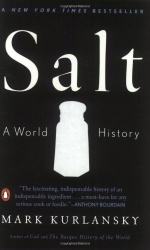|
This section contains 285 words (approx. 1 page at 400 words per page) |

|
Acid
A chemical compound with a ph greater than 7. Chlorine, one of the key components of salt, is an acid.
Base
A base is a chemical compound with a ph less than 7. Sodium, the other half of table salt, is a base.
Kibbutz
A Kibbutz is a collective farm in Israel. The ideal of collective farming was popularized by Theodore Herzl and became a reality once the state of Israel was founded.
Soy
Soy is a legume that has become a dietary staple in China. Most of Chinese dietary salt is ingested via a condiment made from soy and salt, soy sauce.
Natron
Natron is a kind of salt composed of sodium carbonate and sodium bicarbonate. Called "poor man's salt" it was often used by the poor when table salt was not available.
Ostia
Ostia was the most important port of ancient Rome and an important salt works...
|
This section contains 285 words (approx. 1 page at 400 words per page) |

|




